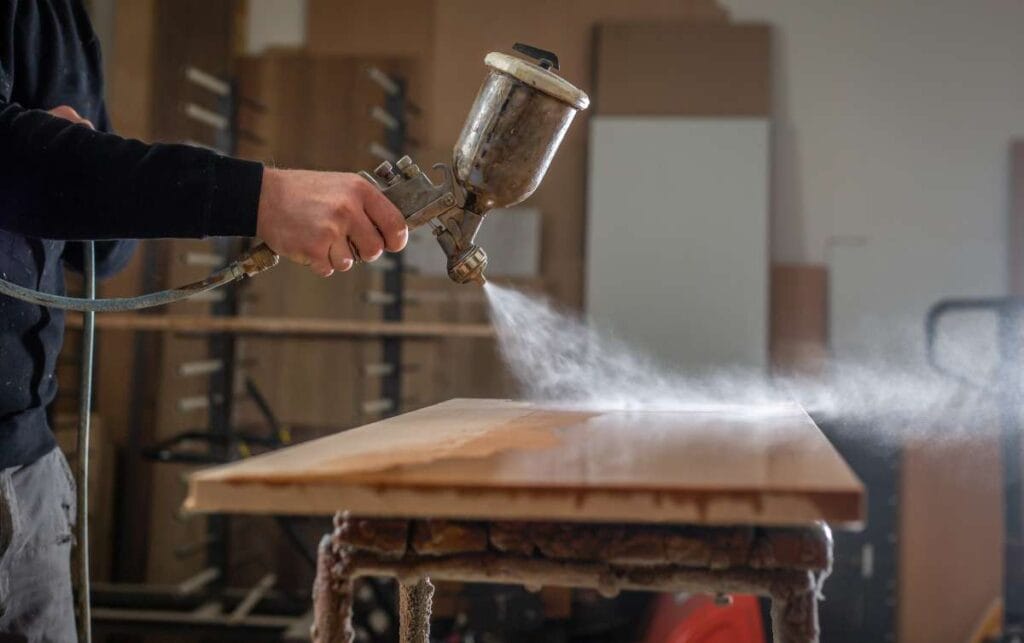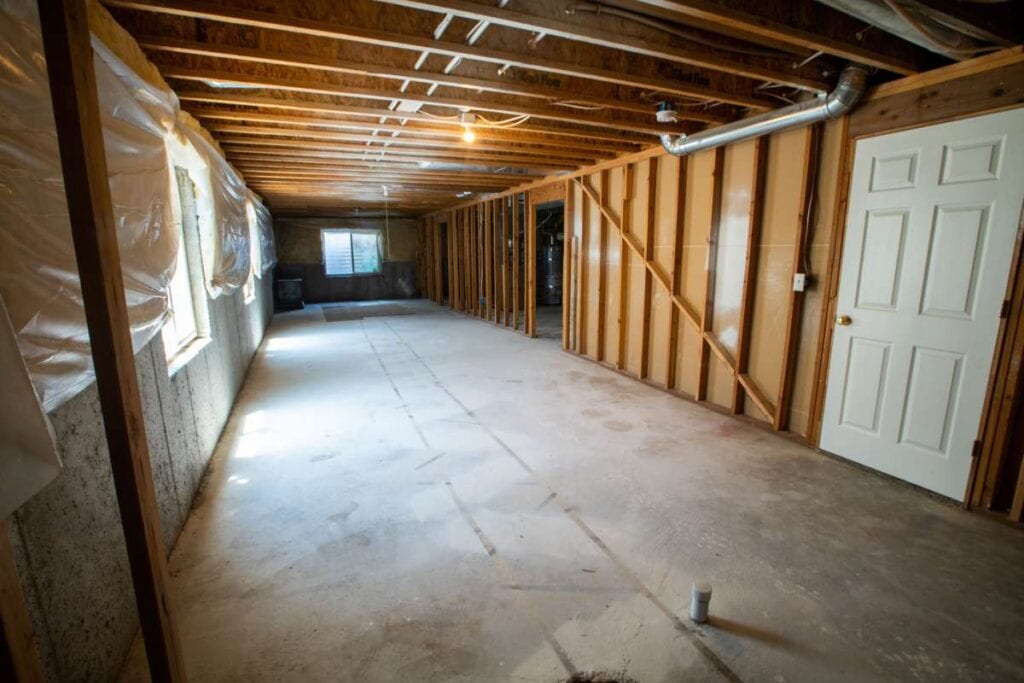When working with wood—whether repairing an old piece of furniture or crafting something new—encountering minor cracks, holes, or imperfections is almost inevitable. Two popular solutions to these common issues are wood putty and wood filler, yet many people, including experienced woodworkers, struggle to choose between them.
Although they might seem similar at first glance, using one over the other can significantly impact the durability and finish of your project. This blog breaks down the key differences between wood putty and wood filler, explains their unique properties, and helps you determine which is best for your next woodworking task.
Let’s get straight to the point
Wood putty and wood filler serve different purposes in woodworking repairs. Wood putty is oil-based, flexible, and ideal for outdoor use on finished wood. It resists weather changes but cannot be sanded or painted.
Conversely, wood filler is water-based, dries quickly, and is best suited for indoor use on unfinished wood. It can be sanded smooth, painted, or stained, but it isn’t flexible enough for outdoor use where wood might expand or contract. Choosing between them depends on the project’s location, wood finish, and desired flexibility.
The Distinction Between Wood Filler And Wood Putty
At a glance, wood putty and wood filler might appear similar, but there are crucial distinctions:
- Wood Putty is oil-based and designed for use on finished wood, primarily in outdoor applications. It remains flexible and can withstand expansion, contraction, and weather variations.
- Wood Filler is usually water-based, applied to unfinished wood, and dries quickly. It can be sanded and painted over, making it ideal for indoor projects.
Let’s dive deeper into what sets them apart and explore the best use cases for each.
Wood Putty
Wood putty is a flexible, oil-based substance primarily used to address minor surface blemishes on finished wood. Here’s a detailed look at its composition, application, and pros and cons.
Composition And Characteristics
- Oil-Based: Wood putty typically contains oils like linseed, making it water-resistant and flexible. This property allows it to move with the wood during expansion and contraction, which is ideal for outdoor projects.
- Consistency: The putty is soft and malleable, allowing for easy manipulation. It feels somewhat like clay and can be applied with a putty knife.
- Colour Variety: Wood putty often comes in multiple wood-toned shades, making it easier to match the surrounding surface.
Best Uses
- Outdoor Projects: Its water-resistant nature makes wood putty perfect for outdoor furniture, window frames, or decks.
- Finished Wood: Designed for application over finished wood, wood putty works well to fill small cracks, dents, or nail holes without needing to be sanded down.
Pros And Cons
Pros
- Weather-Resistant: Excellent for outdoor use due to its flexibility and resistance to moisture.
- Cost-Effective: A small amount goes a long way, making it an economical choice.
- Self-Adhesive: No additional sealer is needed for oil-based finishes.
Cons
- Slow Drying Time: Wood putty takes longer to dry, which can be inconvenient for projects that need quick completion.
- Not Sandable: Because of its flexibility, it cannot be sanded smooth, limiting its use to minor repairs on finished wood.
- Incompatible with Water-Based Paints: Oil-based putty will cause water-based paints to peel, so it is best suited for oil-based finishes.

Wood Filler
Wood filler, on the other hand, is primarily a water-based product designed for unfinished wood surfaces. It is ideal for indoor applications with a smooth, sandable finish.
Composition And Characteristics
- Water-Based Formula: Most wood fillers are water-based, allowing them to dry quickly and making them easy to sand.
- Stainable and Paintable: After it has dried, the wood filler can be stained or painted to match the surrounding wood.
- Versatility: Available in multiple formulations, such as latex, epoxy, and polyurethane fillers, which can meet different needs.
Best Uses
- Indoor Applications: Wood filler is best suited for indoor projects, especially furniture that won’t be exposed to moisture or extreme temperatures.
- Unfinished Wood: Since it can be sanded smooth, wood filler is perfect for unfinished wood surfaces and provides an ideal foundation for staining or painting.
Pros And Cons
Pros
- Quick Drying Time: Some wood fillers dry within 10 minutes and are fully set within 24 hours, making them ideal for projects on a tight schedule.
- Smooth Finish: It is easily sanded to create a smooth, even surface that can be stained or painted to blend with the surrounding wood.
- Versatile: Wood fillers come in different forms, including stainable varieties, making it easy to achieve a uniform finish.
Cons
- Not Flexible: Wood filler lacks the flexibility needed for outdoor use. It will crack if the wood expands and contracts.
- No Adhesive Properties: A sealer or adhesive must be applied over wood filler, unlike wood putty, which can adhere to finished wood.
Key Differences Between Wood Putty And Wood Filler
Here’s a breakdown of the main distinctions to help you decide between wood putty and wood filler:
- Base Material:
- Wood Putty: Oil-based
- Wood Filler: Usually water-based
- Best For:
- Wood Putty: Finished wood, outdoor projects
- Wood Filler: Unfinished wood, indoor projects
- Drying Time:
- Wood Putty: Longer drying time
- Wood Filler: Quicker drying
- Sandability:
- Wood Putty: Not sandable
- Wood Filler: Sandable
- Flexibility:
- Wood Putty: Flexible, adapts to expansion/contraction
- Wood Filler: Rigid, may crack if used on expanding/contracting surfaces
Choosing The Right Product For Your Project
Choosing between wood putty and wood filler will depend on the specific requirements of your project. Here are some key considerations to guide your decision:
- Outdoor Projects: Wood putty is your best option for outdoor furniture or any wood surfaces exposed to weather, as it won’t crack with expansion and contraction.
- Finished Wood: Use wood putty to make small repairs on finished or stained wood. It blends well with the finish and doesn’t require additional sealing.
- Indoor, Unfinished Wood: Wood filler is ideal for indoor applications where the wood will be painted or stained afterwards. Its ability to be sanded makes it perfect for creating a smooth finish.
- Time Constraints: If you’re working within a tight deadline, wood filler’s faster drying time makes it more convenient.

Practical Tips For Application
- Apply Sparingly. A little wood putty goes a long way. Apply just enough to fill the hole and allow it to dry thoroughly.
- Match Colors: Both wood putty and wood filler come in various shades. Try to find a shade that closely matches the wood grain or tone for a seamless appearance.
- Sanding and Staining Wood Filler: Once the wood filler has dried, apply a stain that matches the surrounding wood for a flawless finish.
Wrapping Up: Which Is Right For You?
The choice between wood putty and wood filler boils down to a few core factors: project location, wood finish, and flexibility needs. Here’s a final summary to help you make the best decision:
- Wood Putty is ideal for:
- Outdoor use due to its flexibility and weather resistance
- Finished wood that doesn’t require sanding
- Minor repairs that don’t need to be painted or stained
- Wood Filler is best for:
- Indoor applications where a smooth, even finish is needed
- Unfinished wood surfaces that will be painted or stained
- Quick fixes thanks to its faster drying time
Selecting the right product is essential to the quality and durability of your woodworking project. Whether mending a cherished piece of furniture or crafting new woodwork, using the appropriate filler will ensure a long-lasting and beautiful finish.
Conclusion
In conclusion, choosing the right product between wood putty and wood filler is essential for achieving a high-quality, durable finish in your woodworking projects. While wood putty is perfect for outdoor, finished wood due to its flexibility and weather resistance, wood filler shines in indoor applications where a smooth, paintable or stainable surface is required.
Understanding the distinct qualities of each will help you make informed decisions, whether you’re repairing a cherished piece of furniture or working on a new project. Selecting the appropriate filler will ensure a seamless, professional look that stands the test of time.
FAQs About Wood Fillers And Wood Putty
Which Is Better, Wood Putty Or Wood Filler?
Let’s clear up the confusion: Wood fillers can be sanded and stained and are best used on unfinished woodwork. Wood putty is best for repairing cracks and small holes in finished woodwork.
Should I Use Wood Putty Or Wood Filler?
If you use wood filler, it will break when the wood expands or contracts. Wood putty, however, will remain in place even if the wood gets twisted. Most woodworkers also use wood putty for minor repairs and to cover minor imperfections. This includes nail holes, small blemishes, and minor joint mismatches.
Can I Use Wood Filler Without Hardener?
No, the wood filler does not harden without adding a hardener. The hardening process happens due to a chemical reaction between the wood filler and the hardener, also known as the catalyst. The hardener/catalyst mediates the chemical reaction to harden the wood filler quickly.
Can You Paint Over Wood Filler?
Once you’re sure that the wood filler is completely dry, you will want to sand over any repaired areas again. Sanding is necessary to create an even surface for painting. Sand the area until you can run your hand over it and feel little difference between the surfaces.
Why Is My Wood Filler Cracking?
One of the first distinctions to remember is that wood filler is prone to shrinking and cracking when exposed to fluctuating temperatures, so it shouldn’t be used outdoors.

